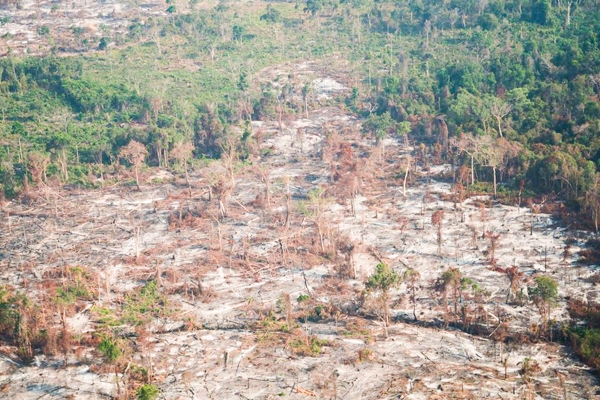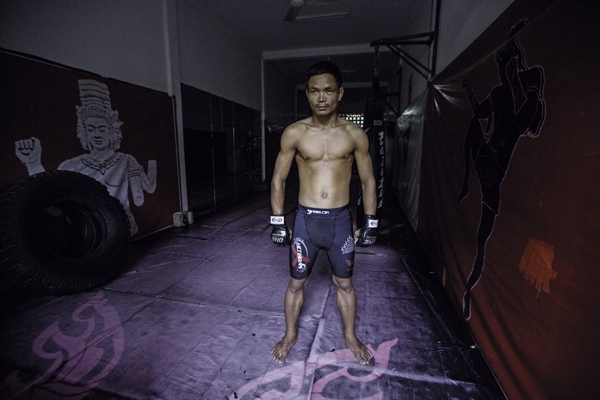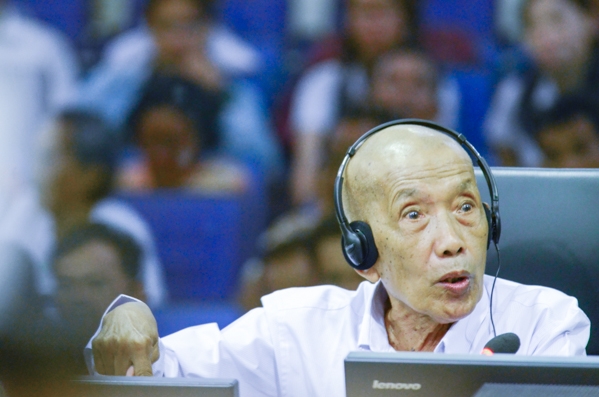Many of us have been in this situation: you go back to your childhood home and are instantly reminded of specific events in your life. The fall off the third step on the staircase in the 5th grade, the fight with your sister in the hallway when you were 15.
Your surroundings often serve as an immediate trigger for a backlog of memories that, unintentionally or not, your mind decided to store away in the recesses of your mind.
This idea is amplified a thousand times over in relation to Khmer Rouge survivors forced to live amongst landmarks, both seen and unseen, of the tragedy they lived through, and serves as the topic of Everyday Experiences of Genocide Survivors in Landscapes of Violence in Cambodia, by Savina Sirik.
Ms. Sirik, a researcher who spent eight years working at the Documentation Center of Cambodia (DC-Cam) before getting her Masters in Geography from Kent State University in the United States, looks at the way the Khmer Rouge cemented violence into the everyday lives and surroundings of the country’s citizens, among a host of other interesting topics.
Many of these landscapes, despite the lack of or dilapidation of physical memorials, now serve as personal reminders of tragedy for local residents, many of whom still live in the same homes and communities they resided in during the Khmer Rouge years.
“Through interviews with Khmer Rouge survivors, I discuss how men and women lived through the genocide years and how they conduct their day-to-day activities in the present amid sites of past mass violence,” she writes.
She goes on to detail the way structures and landscapes were taken over by the Khmer Rouge, used and then abandoned again. She focuses on Khmer Rouge survivors currently living around Chamkar Siv, a former Khmer Rouge prison located in Prek Ta Meak commune, Kandal province.
Residents of the commune are forced to live amongst landmarks, both personal and widely identified, of the violence that occurred during the Khmer Rouge. Rice fields that drivers pass by once served as mass burial sites. Schoolhouses and temples were once Khmer Rouge offices and prisons. The book delves into the effect this has on how survivors remember and commemorate those lost as well as deal with their own memories of personal tragedy.
“The potential for these sites to be memorialized or used to represent the past violence have largely been dictated by politics – the politics of memory that have been employed as a tool to justify the existing political regime.”
This idea blends into another topic she thoroughly researches – the politics of memory and its effect on people who were not there to witness what happened. She goes on to discuss how, once the People’s Republic of Kampuchea (PRK), led by current Prime Minister Hun Sen and backed by Vietnamese forces, took Phnom Penh from the Khmer Rouge in 1979, one of the first things the PRK did was create memorials and museums at the infamous S-21 prison and Choeung Ek Killing Fields.
“The significant message that Tuol Sleng and Choeung Ek sent to the local population in the early period of the PRK regime, and which is still apparent today, was that the population needed to support the PRK government in order to prevent the Khmer Rouge from returning to power,” the book states.
“In order to justify the presence of Vietnam and distance the PRK regime from the crimes committed by the DK [Khmer Rouge] regime, the new emerging state established a narrative that labeled DK a ‘fascist’ regime, in alignment with Hitler’s Germany,” she writes. “It was also important for the PRK regime to argue that what happened in Cambodia during the DK regime, and particularly at Tuol Sleng, was a genocide like that of the Holocaust during World War II.”
She says that while their objective was not malicious, the memorials did serve a very specific political purpose. By highlighting the absolute worst of the Khmer Rouge, they in turn legitimized their own takeover and justified their rule of the country thereafter.
* * *
The dissemination of the state-sanctioned narrative of the Khmer Rouge mostly lines up with the experiences of people across the country, she writes. But this narrative may also do a disservice to the wide range of memories related to the Khmer Rouge.
The dominant narrative often has an effect on the way people personally remember situations. Many people mesh the official story with their own, sometimes even forgetting their own specific experience in favor of the common narrative.
But what brings people back to their own personal memories are often landmarks – significant places or events that people will always remember regardless of the amount of time that passes.
“By exploring the experiences of survivors who lived through the violence and continue to live among sites where mass violence was perpetrated during and after the Khmer Rouge regime, this study reaches two major conclusions: 1) Although individual experiences vary, the ways in which survivors narrate their experiences appear to relate to standard or collective narratives widely disseminated at the national level; and 2) Public ceremonies and monuments are not enough,” she writes.
The last conclusion is the lynchpin for the book, and she goes on to explain how the current monuments and ceremonies are supplemented, or even replaced, by hyper-local, and sometimes intensely personal, displays of remembrance, ranging from private annual ceremonies in homes to traditional Buddhist gatherings at temples or stupas.
This also plays a role in the way the country’s young people interact with the Khmer Rouge and its memory. Many survivors interviewed in the book said they were dismayed by the lack of understanding and, at times, outright denial of facts by a new generation that cannot fathom the idea that Khmer people would do the things historians and survivors have described to other Khmer people.
“These sites constitute unmarked violent landscapes, identifiable only by local residents, and remain invisible to visitors who merely pass by the area. This is especially true for members of the younger generation born after the atrocities,” she writes, adding that having young people understand and think about what happened will not only have an effect on them, but on survivors as well.
“Many survivors… stressed that having their children learn and accept the history of the DK regime validated their own experiences and personal narratives,” she writes.
Though efforts by DC-Cam to hold events and include the country’s history in textbooks are working to better educate young people, many survivors wonder whether the younger generation will ever truly understand what happened during the Khmer Rouge.
Thy, a woman Ms. Sirik spoke to for the book, said: “I think even if I keep telling them, children still do not believe me 100 percent. It’s hard for them to believe that such an atrocity could have taken place in their country and against their parents.”
The book is available at all Monument Bookshops across Cambodia, Laos and Burma. You also can find it at DC-Cam.
http://www.khmertimeskh.com/news/25441/---everyday----remembrance/



















